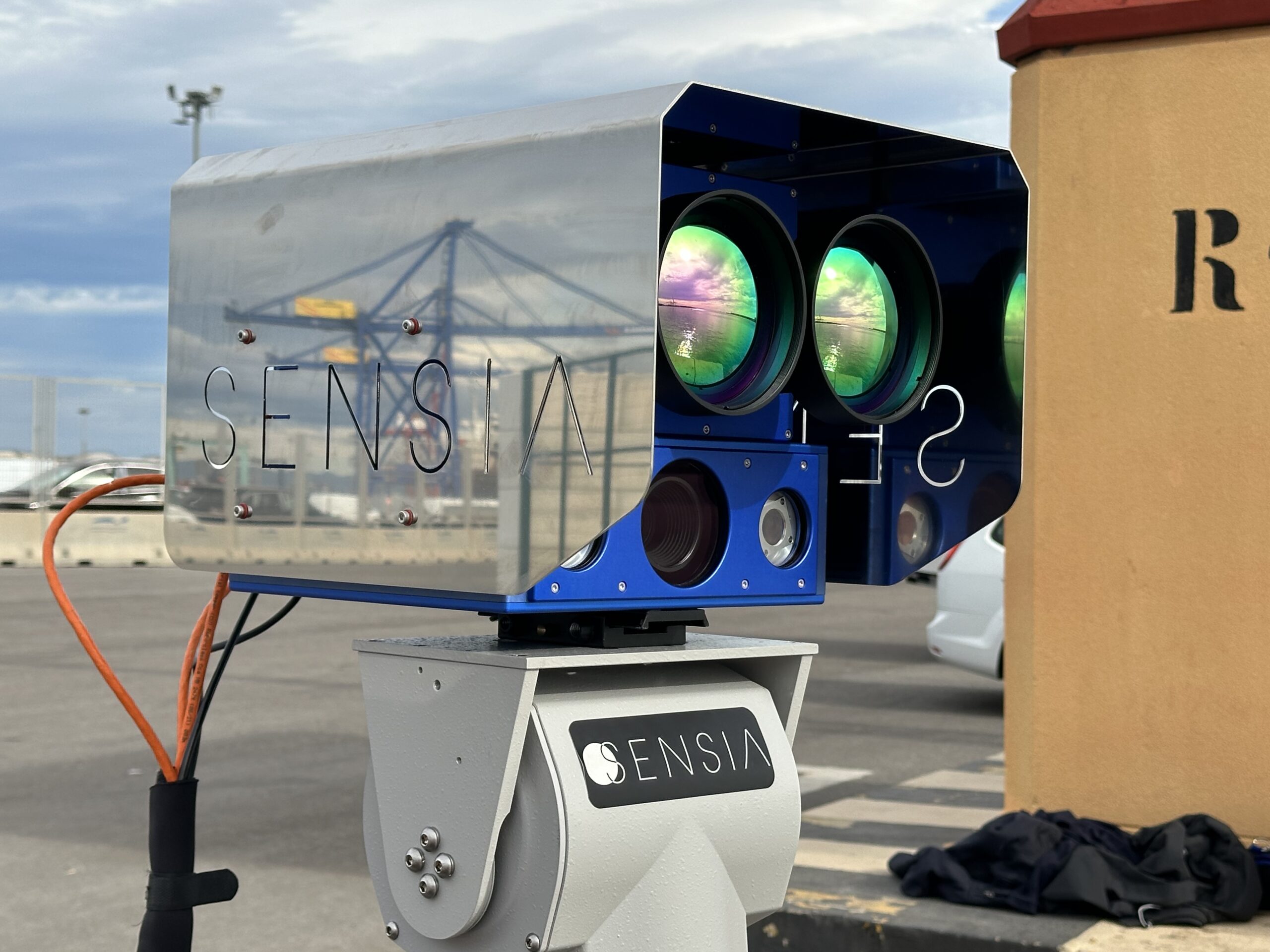In the relentless pursuit of sustainability and environmental responsibility, the energy sector stands at the forefront of innovation.
As the world transitions towards a cleaner energy future, the imperative to reduce emissions has never been more pressing. Amidst this challenge, Optical Gas Imaging (OGI) technology emerges as a powerful ally, offering a novel approach to detecting and mitigating emissions while simultaneously unlocking value from emissions data.
Understanding Optical Gas Imaging (OGI) Technology
OGI technology involves the use of infrared cameras to detect and visualise gas leaks that are otherwise invisible to the naked eye. These cameras can detect a wide range of gases, including methane, a potent greenhouse gas. By pinpointing leaks in real-time, OGI technology allows energy companies to swiftly address issues, thereby minimising emissions.
Traditionally, gas leaks were detected through manual inspections or fixed sensors. However, these methods often proved inadequate, leading to undetected leaks and higher emissions. OGI technology revolutionises this process by providing a more comprehensive and efficient means of detection.
Reducing Emissions through OGI Implementation
The deployment of OGI technology offers several key benefits in the quest to reduce emissions within the energy sector:
- Early Detection and Mitigation: OGI enables the rapid identification of gas leaks, allowing companies to take immediate action to repair faulty equipment or infrastructure. By addressing leaks promptly, emissions are minimised, and environmental impact is reduced.
- Improved Safety: Beyond environmental benefits, OGI enhances safety by identifying potentially hazardous leaks that pose risks to personnel and surrounding communities. By proactively addressing safety concerns, companies can uphold their commitment to protecting both people and the environment.
- Regulatory Compliance: Stringent regulations govern emissions within the energy sector. OGI technology ensures compliance with these regulations by providing accurate monitoring and reporting capabilities. By staying ahead of regulatory requirements, companies can avoid penalties and reputational damage.
- Enhanced Operational Efficiency: OGI technology streamlines maintenance processes by identifying leaks quickly and accurately. This proactive approach minimises downtime and optimises asset performance, ultimately improving operational efficiency and reducing costs.

Real-Time Quantification and Baseline Data with OGI Technology
One of the most significant advantages of Optical Gas Imaging (OGI) technology is its capability for real-time quantification of emissions. OGI cameras not only detect gas leaks but also provide instant feedback on the concentration and volume of emitted gases. This real-time data empowers companies with actionable insights, allowing for prompt decision-making and mitigation strategies.
For companies embarking on their emission measuring journey, OGI technology offers a valuable starting point by providing baseline data. By deploying OGI cameras, companies can establish a comprehensive understanding of their emission levels and patterns, laying the foundation for future emission reduction efforts.
Extracting Value from Emissions Data
Beyond emission reduction, OGI technology also presents opportunities for extracting value from emissions data:
- Data-Driven Decision Making: OGI generates vast amounts of data regarding emissions and infrastructure integrity. By leveraging advanced analytics and machine learning algorithms, companies can extract valuable insights to inform strategic decision-making and optimise operational processes.
- Predictive Maintenance: By analysing emissions data over time, companies can develop predictive maintenance models to anticipate equipment failures and prevent costly downtime. This proactive approach minimises disruptions to operations and maximises asset lifespan.
- Emission Trading and Offsetting: In an era of carbon markets and emission trading schemes, accurate emissions data is invaluable. OGI technology provides the necessary data to participate in these schemes, allowing companies to monetise emission reductions and offset carbon footprints.
- Stakeholder Engagement and Transparency: Transparent reporting of emissions data enhances stakeholder trust and fosters a positive reputation for sustainability. By proactively sharing emissions data with stakeholders, companies can demonstrate their commitment to environmental responsibility and build stronger relationships with customers, investors, and regulators.
Conclusion
In an era defined by the urgent need to combat climate change, the energy sector must embrace innovative solutions to reduce emissions and mitigate environmental impact. Optical Gas Imaging (OGI) technology offers a transformative approach to emission reduction, enabling companies to detect leaks quickly, minimise environmental impact, and unlock value from emissions data.
By leveraging OGI technology, energy companies can not only meet regulatory requirements and enhance operational efficiency but also demonstrate leadership in sustainability and drive positive change within the industry. As the world transitions towards a cleaner energy future, Vectur Energy stands poised to play a pivotal role in shaping a more sustainable tomorrow.
Overall, the OGMP 2.0 Gold Standard represents the pinnacle of methane management practices
in the oil and gas industry, driving substantial environmental benefits and reinforcing the commitment to sustainability and responsible operations. Contact us today to learn more about how we can support your operations and safeguard your investments.
In the relentless pursuit of sustainability and environmental responsibility, the energy sector stands at the forefront of innovation.
As the world transitions towards a cleaner energy future, the imperative to reduce emissions has never been more pressing. Amidst this challenge, Optical Gas Imaging (OGI) technology emerges as a powerful ally, offering a novel approach to detecting and mitigating emissions while simultaneously unlocking value from emissions data.
Understanding Optical Gas Imaging (OGI) Technology
OGI technology involves the use of infrared cameras to detect and visualise gas leaks that are otherwise invisible to the naked eye. These cameras can detect a wide range of gases, including methane, a potent greenhouse gas. By pinpointing leaks in real-time, OGI technology allows energy companies to swiftly address issues, thereby minimising emissions.
Traditionally, gas leaks were detected through manual inspections or fixed sensors. However, these methods often proved inadequate, leading to undetected leaks and higher emissions. OGI technology revolutionises this process by providing a more comprehensive and efficient means of detection.
Reducing Emissions through OGI Implementation
The deployment of OGI technology offers several key benefits in the quest to reduce emissions within the energy sector:
- Early Detection and Mitigation: OGI enables the rapid identification of gas leaks, allowing companies to take immediate action to repair faulty equipment or infrastructure. By addressing leaks promptly, emissions are minimised, and environmental impact is reduced.
- Improved Safety: Beyond environmental benefits, OGI enhances safety by identifying potentially hazardous leaks that pose risks to personnel and surrounding communities. By proactively addressing safety concerns, companies can uphold their commitment to protecting both people and the environment.
- Regulatory Compliance: Stringent regulations govern emissions within the energy sector. OGI technology ensures compliance with these regulations by providing accurate monitoring and reporting capabilities. By staying ahead of regulatory requirements, companies can avoid penalties and reputational damage.
- Enhanced Operational Efficiency: OGI technology streamlines maintenance processes by identifying leaks quickly and accurately. This proactive approach minimises downtime and optimises asset performance, ultimately improving operational efficiency and reducing costs.

Real-Time Quantification and Baseline Data with OGI Technology
One of the most significant advantages of Optical Gas Imaging (OGI) technology is its capability for real-time quantification of emissions. OGI cameras not only detect gas leaks but also provide instant feedback on the concentration and volume of emitted gases. This real-time data empowers companies with actionable insights, allowing for prompt decision-making and mitigation strategies.
For companies embarking on their emission measuring journey, OGI technology offers a valuable starting point by providing baseline data. By deploying OGI cameras, companies can establish a comprehensive understanding of their emission levels and patterns, laying the foundation for future emission reduction efforts.
Extracting Value from Emissions Data
Beyond emission reduction, OGI technology also presents opportunities for extracting value from emissions data:
- Data-Driven Decision Making: OGI generates vast amounts of data regarding emissions and infrastructure integrity. By leveraging advanced analytics and machine learning algorithms, companies can extract valuable insights to inform strategic decision-making and optimise operational processes.
- Predictive Maintenance: By analysing emissions data over time, companies can develop predictive maintenance models to anticipate equipment failures and prevent costly downtime. This proactive approach minimises disruptions to operations and maximises asset lifespan.
- Emission Trading and Offsetting: In an era of carbon markets and emission trading schemes, accurate emissions data is invaluable. OGI technology provides the necessary data to participate in these schemes, allowing companies to monetise emission reductions and offset carbon footprints.
- Stakeholder Engagement and Transparency: Transparent reporting of emissions data enhances stakeholder trust and fosters a positive reputation for sustainability. By proactively sharing emissions data with stakeholders, companies can demonstrate their commitment to environmental responsibility and build stronger relationships with customers, investors, and regulators.
Conclusion
In an era defined by the urgent need to combat climate change, the energy sector must embrace innovative solutions to reduce emissions and mitigate environmental impact. Optical Gas Imaging (OGI) technology offers a transformative approach to emission reduction, enabling companies to detect leaks quickly, minimise environmental impact, and unlock value from emissions data.
By leveraging OGI technology, energy companies can not only meet regulatory requirements and enhance operational efficiency but also demonstrate leadership in sustainability and drive positive change within the industry. As the world transitions towards a cleaner energy future, Vectur Energy stands poised to play a pivotal role in shaping a more sustainable tomorrow.
Overall, the OGMP 2.0 Gold Standard represents the pinnacle of methane management practices
in the oil and gas industry, driving substantial environmental benefits and reinforcing the commitment to sustainability and responsible operations. Contact us today to learn more about how we can support your operations and safeguard your investments.






